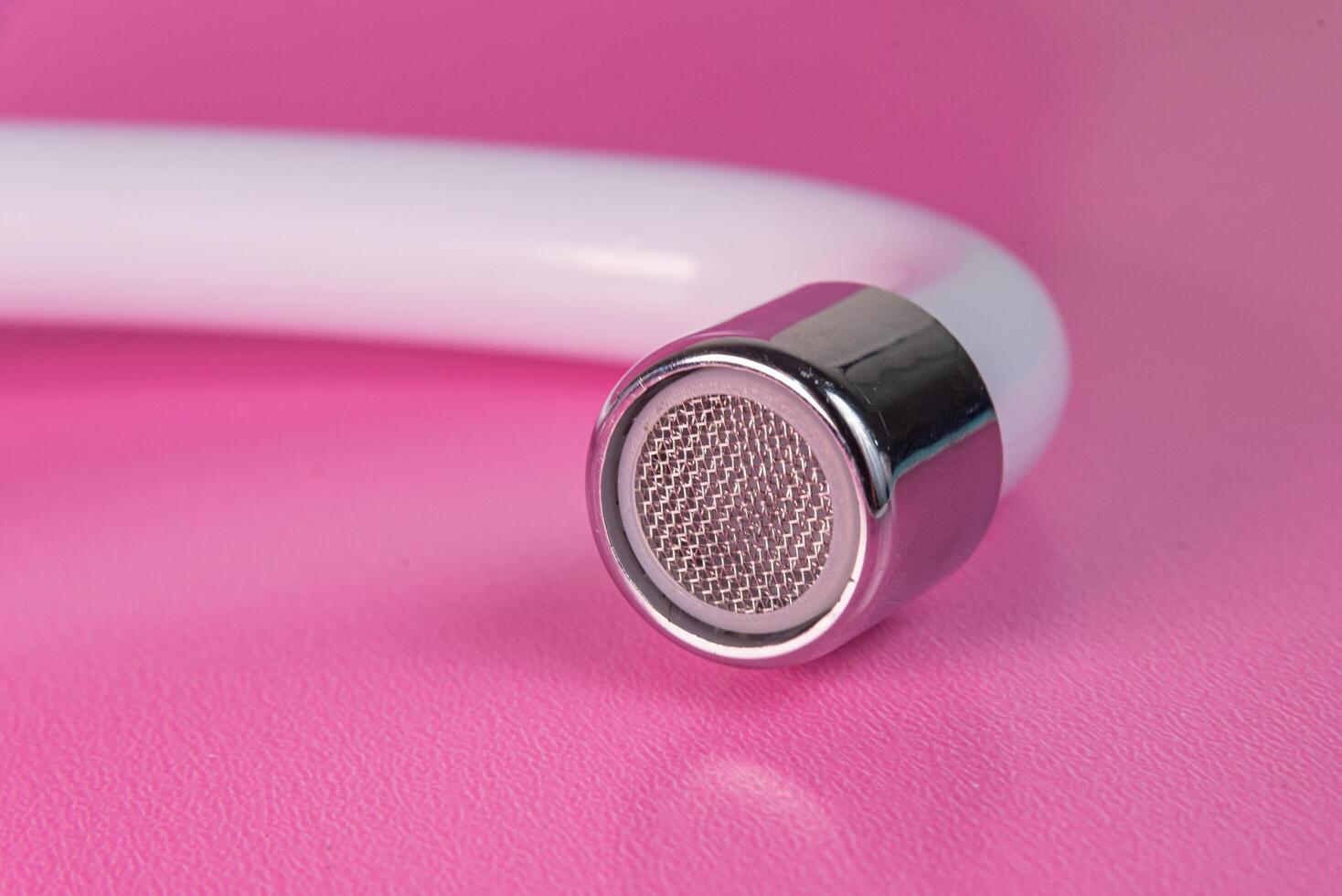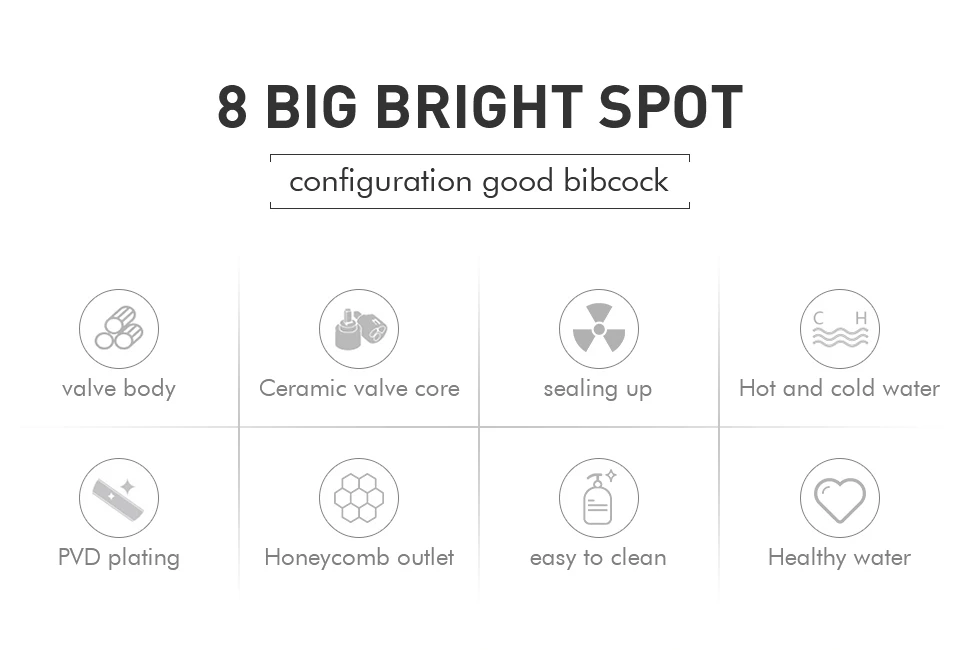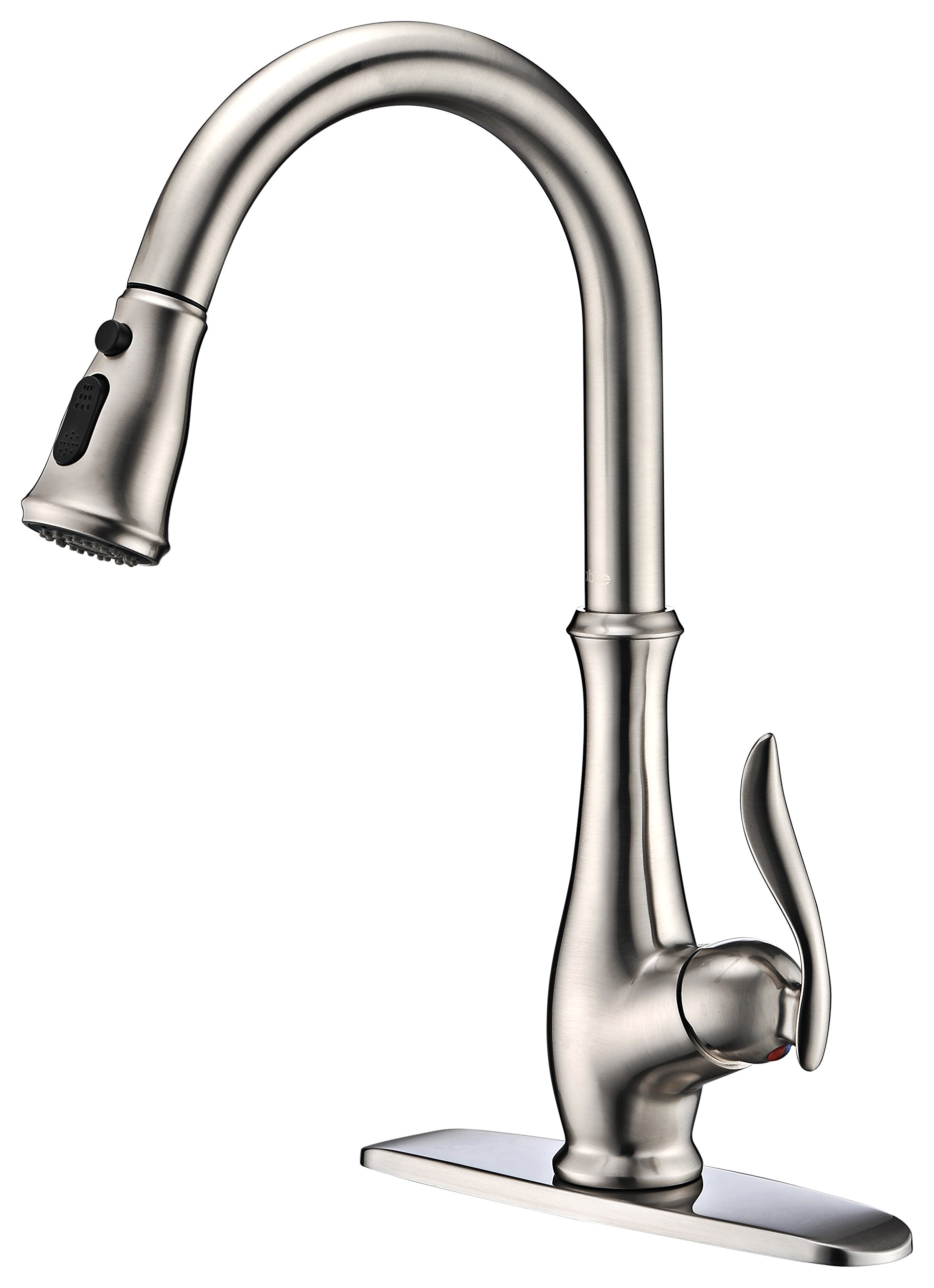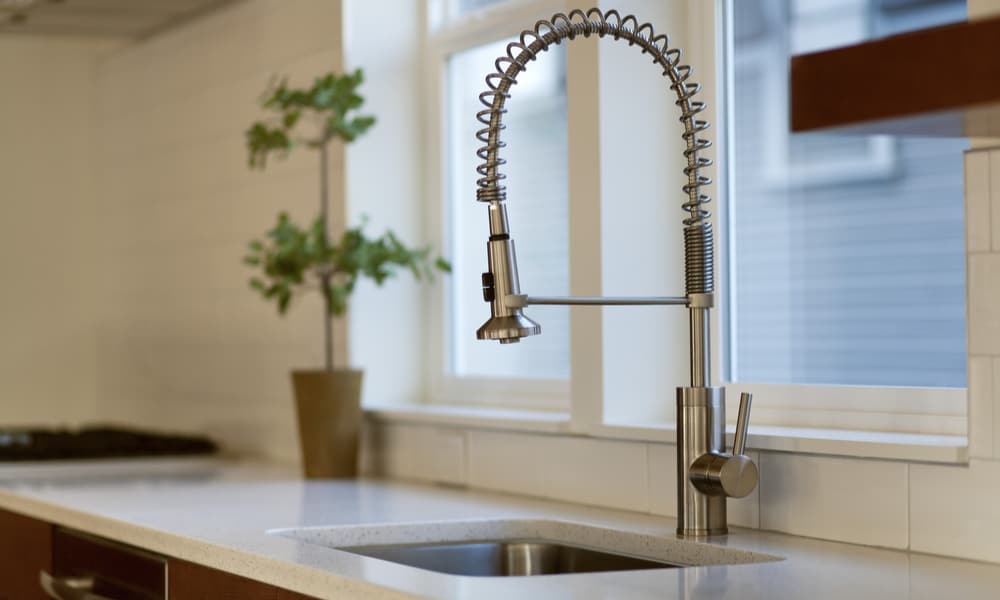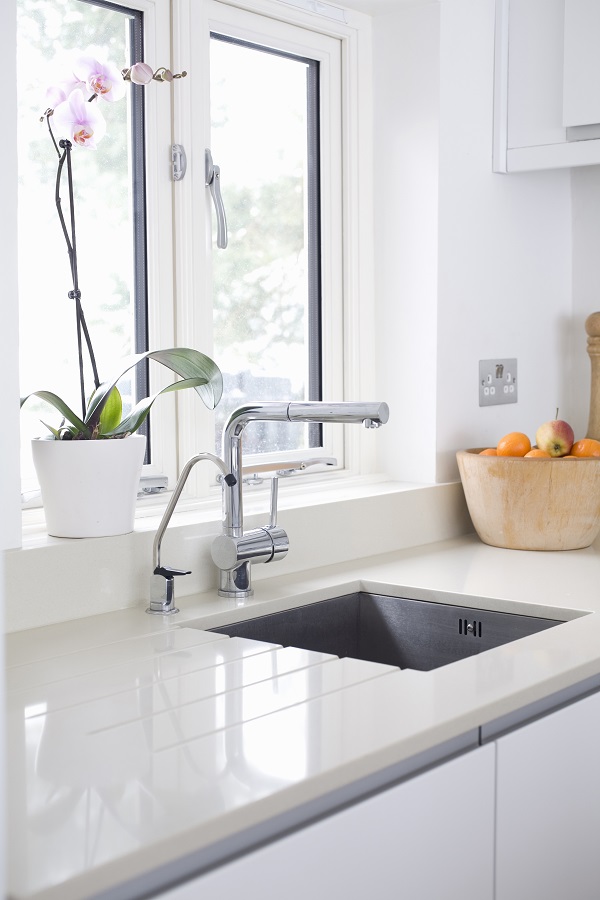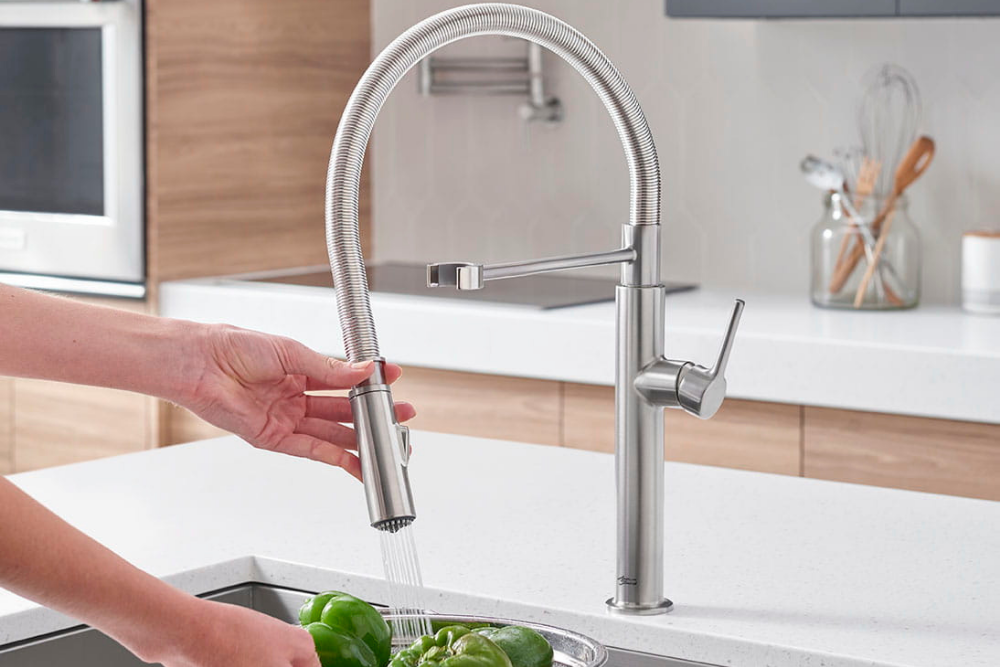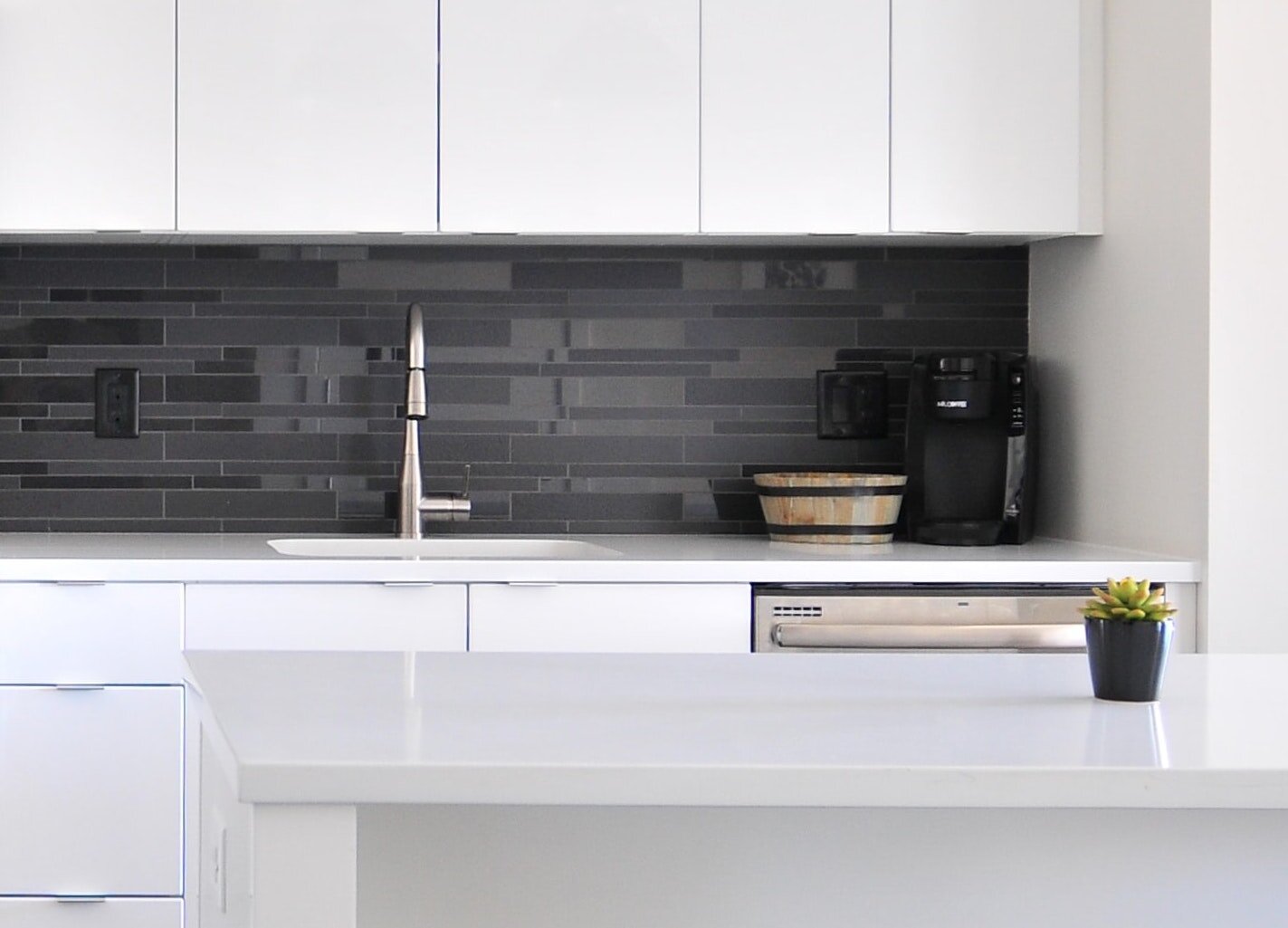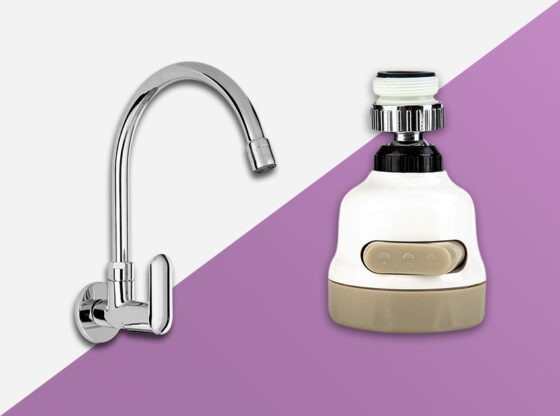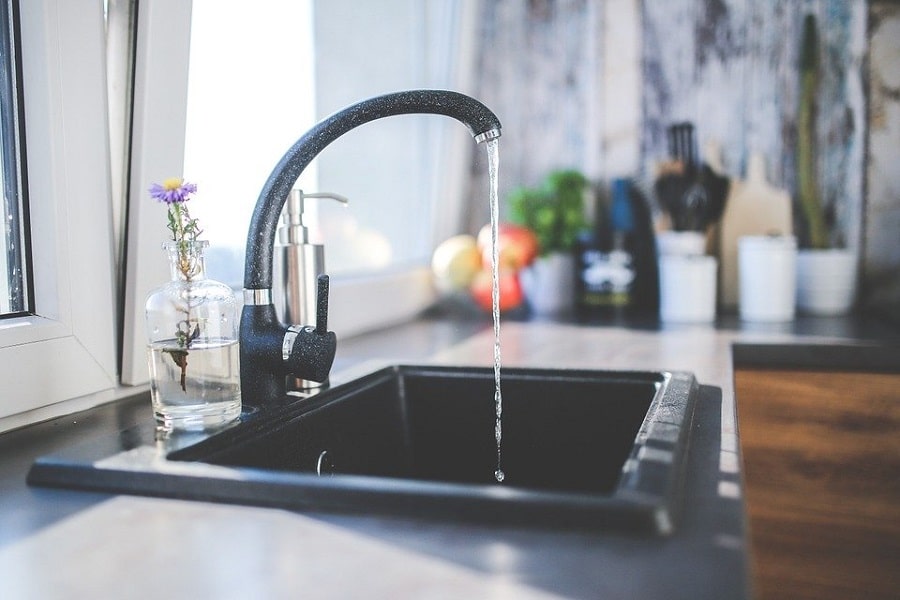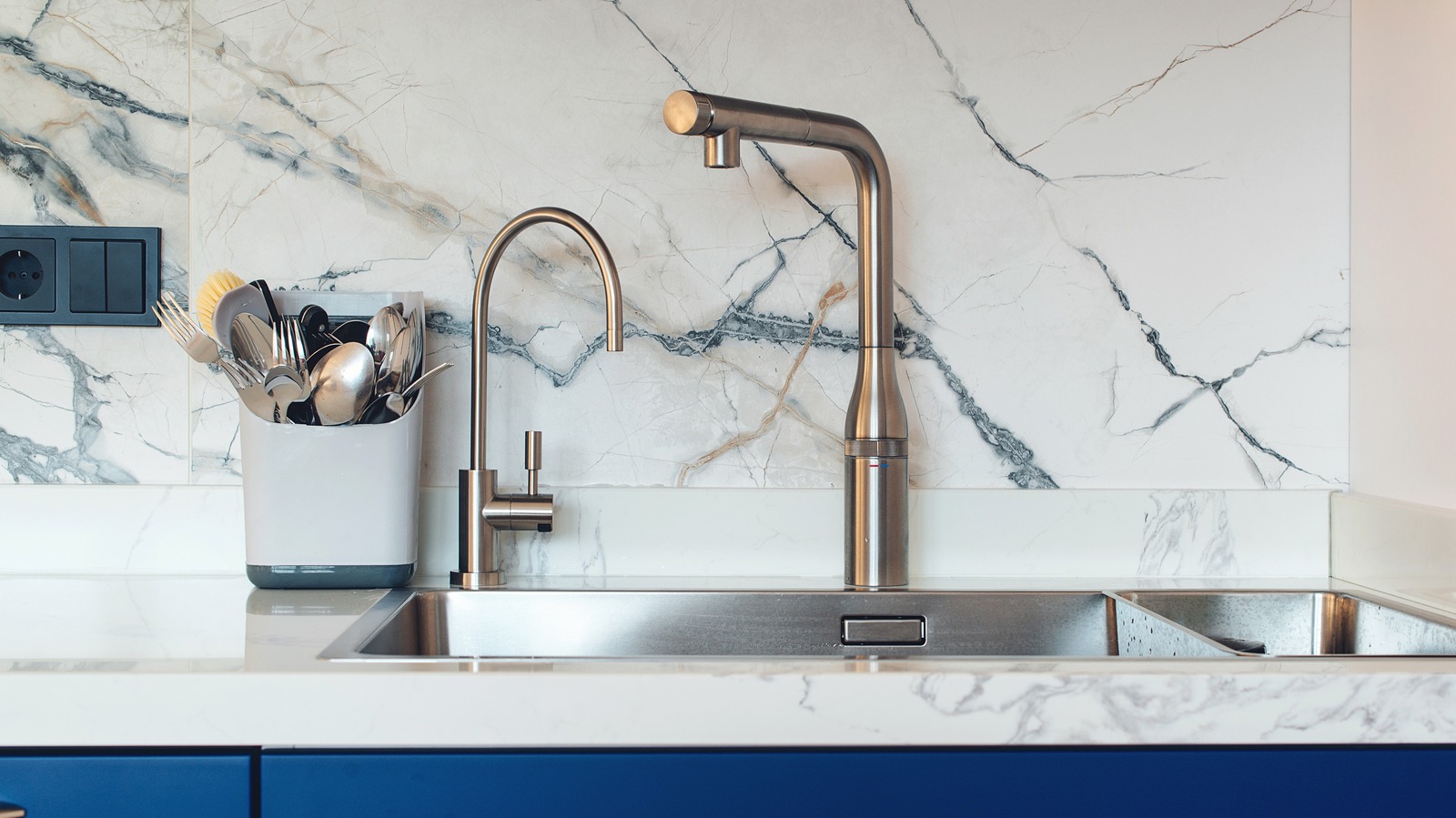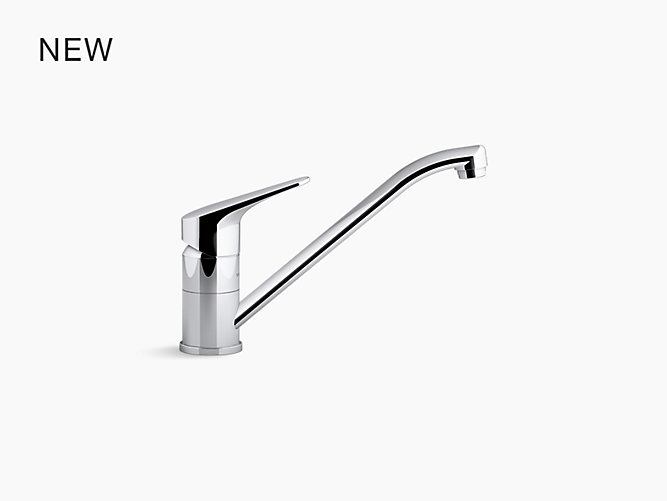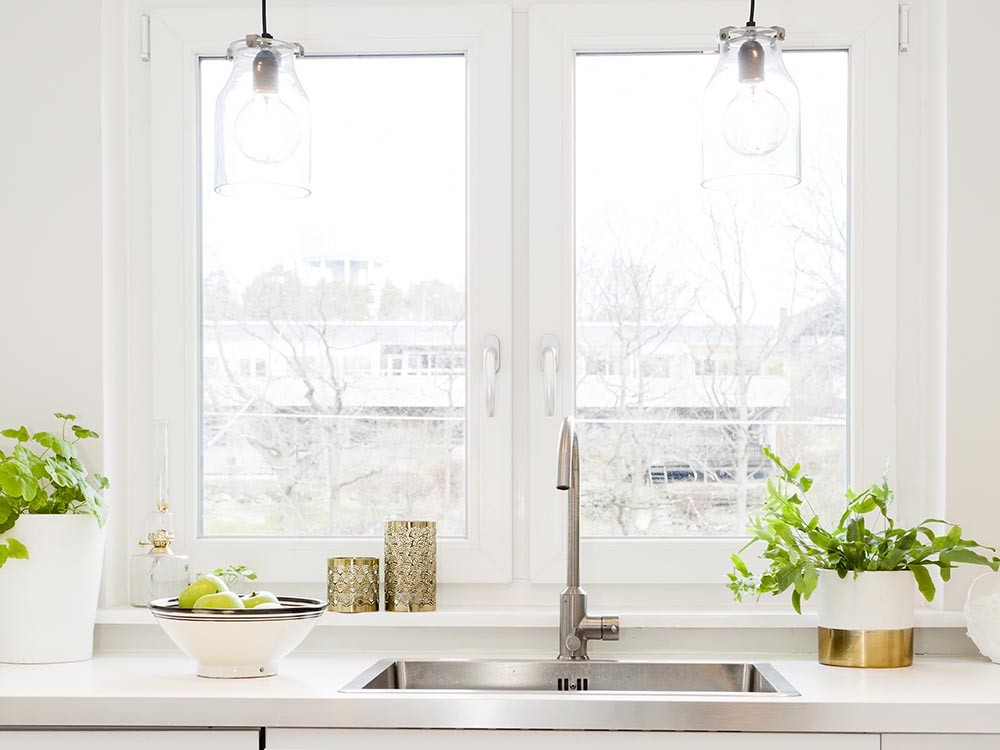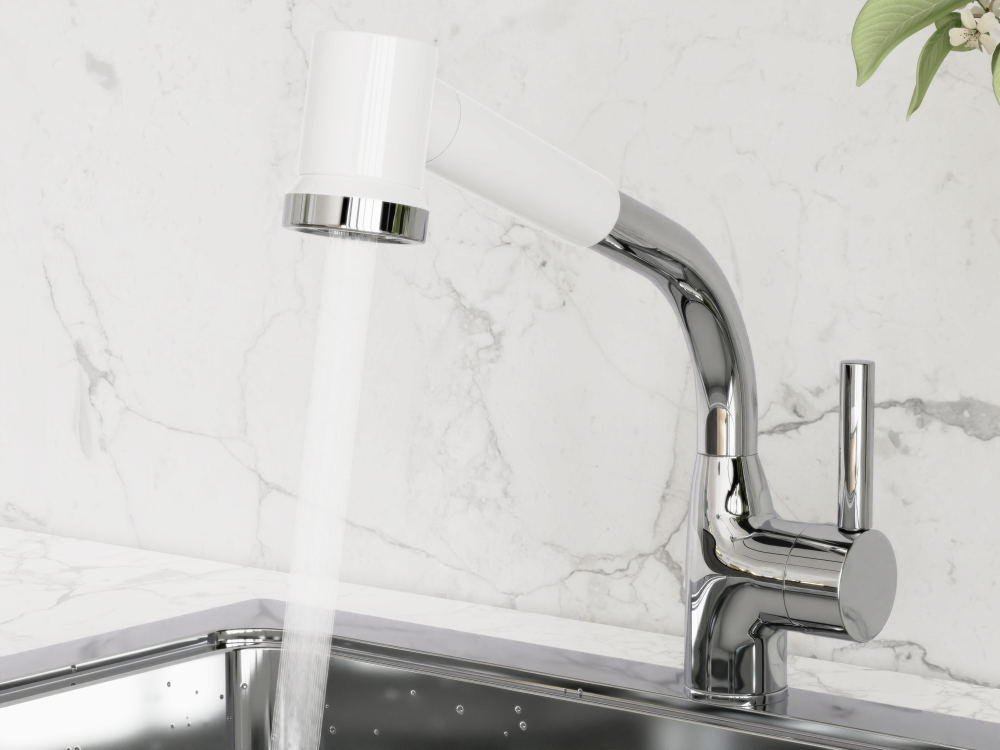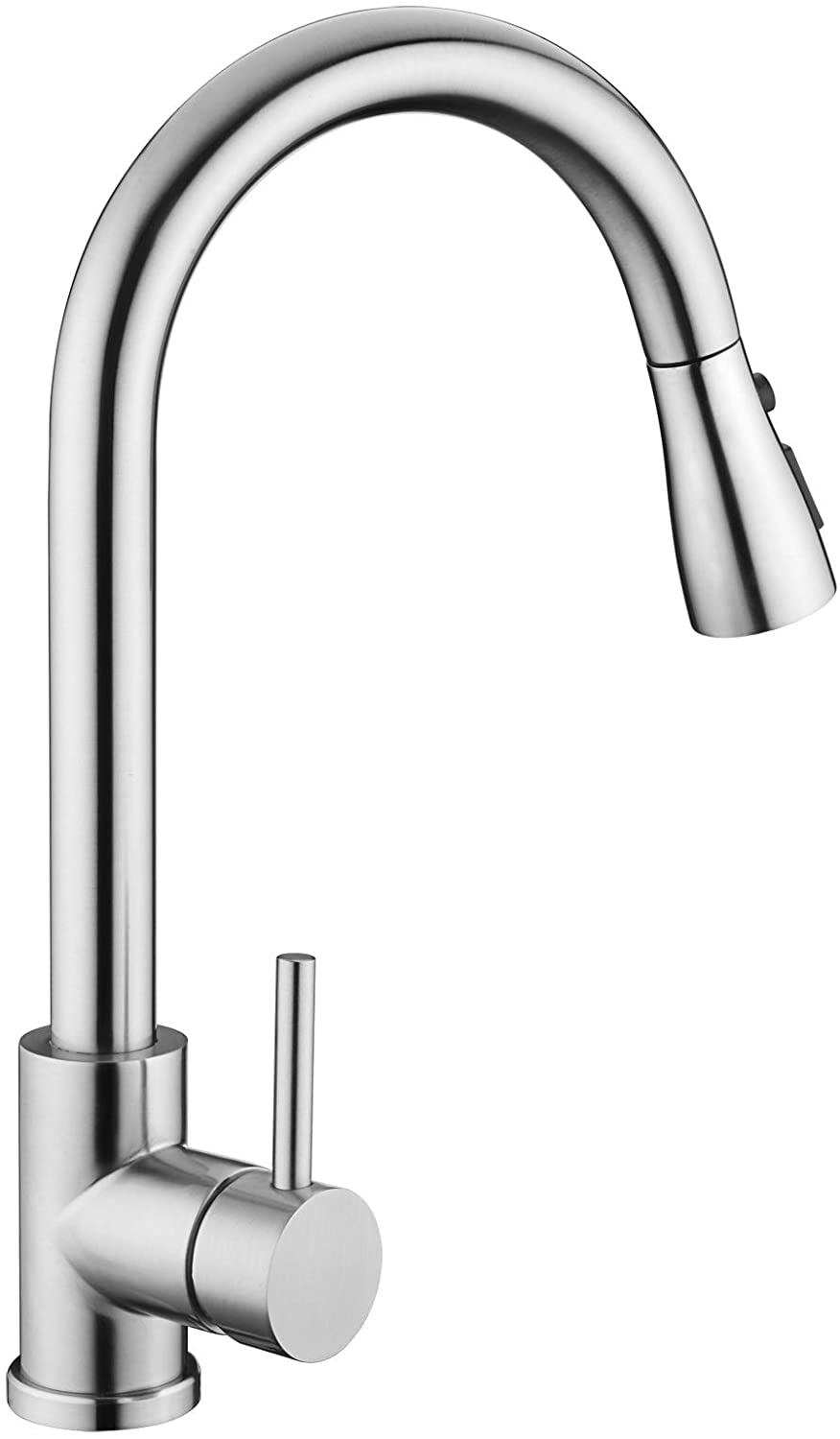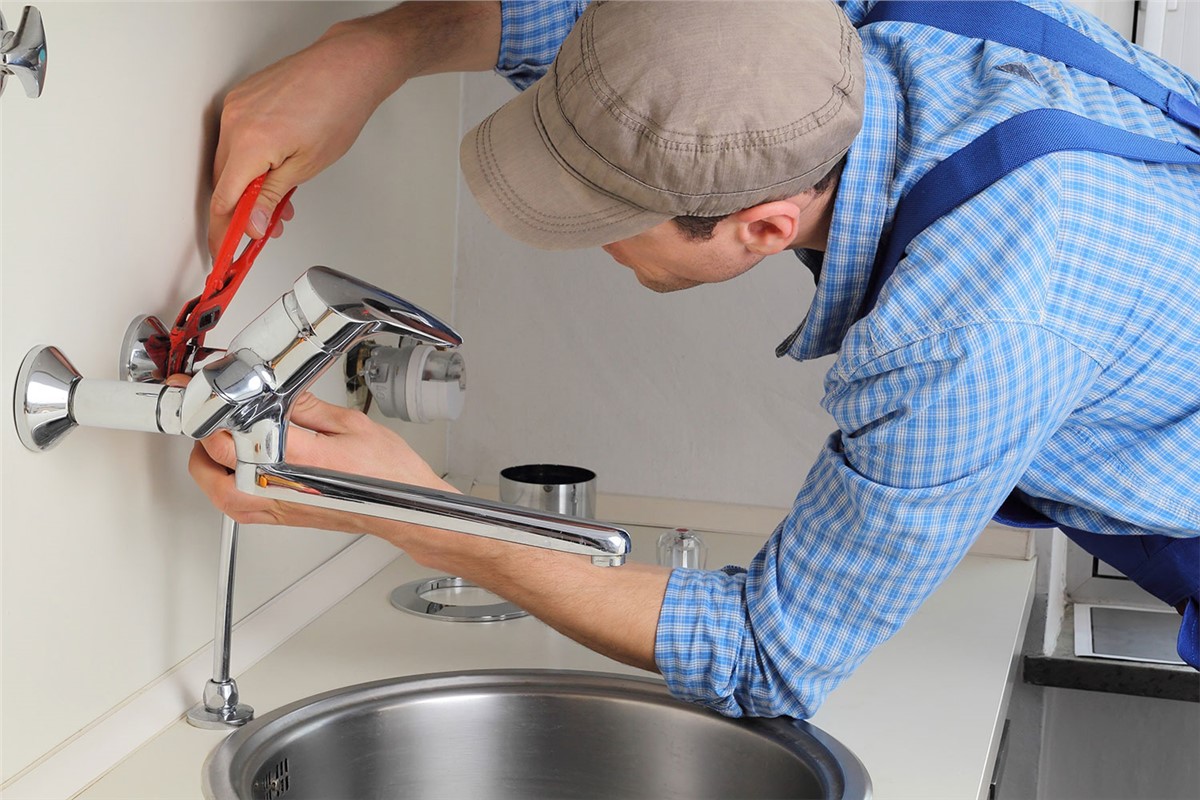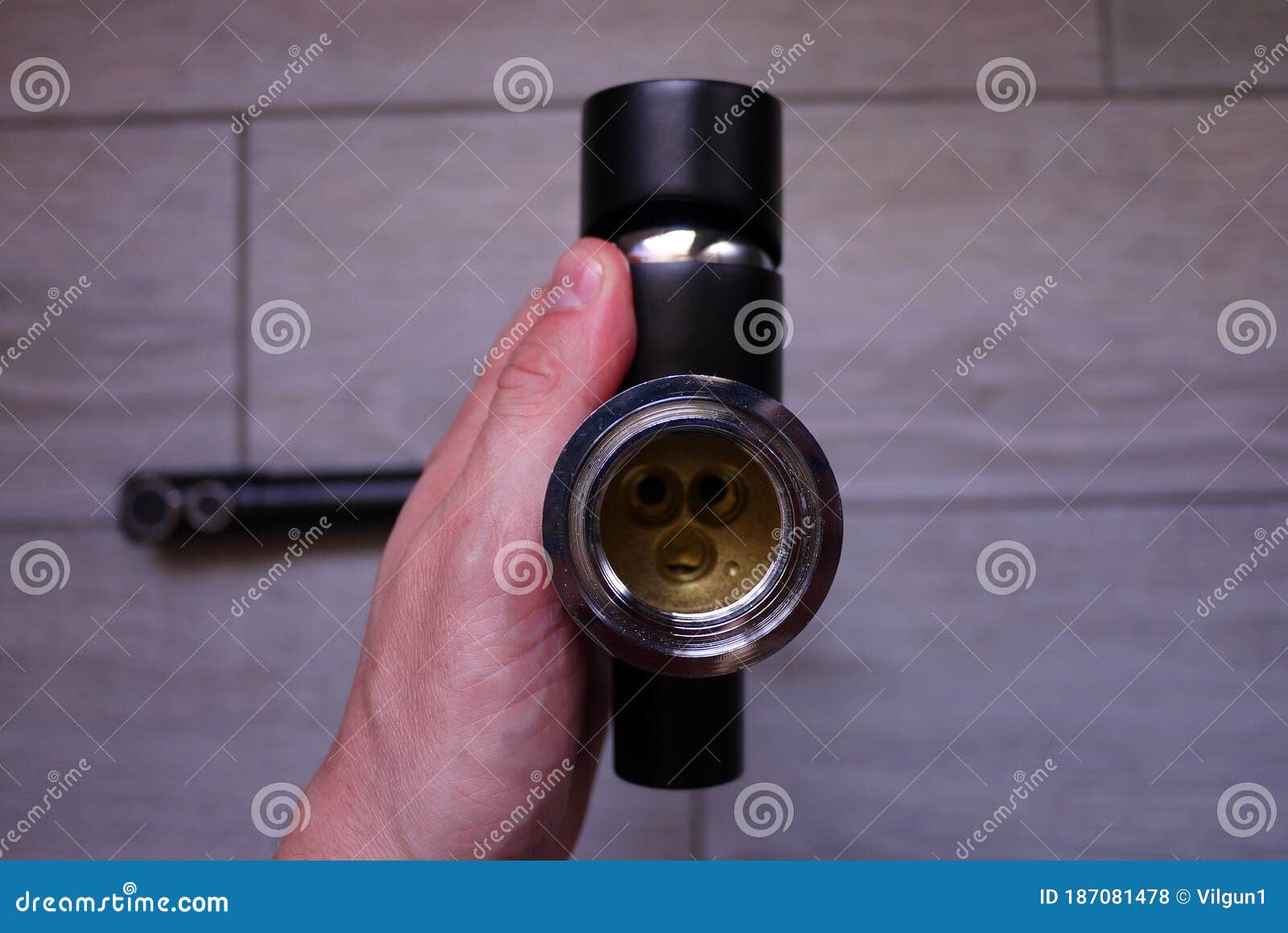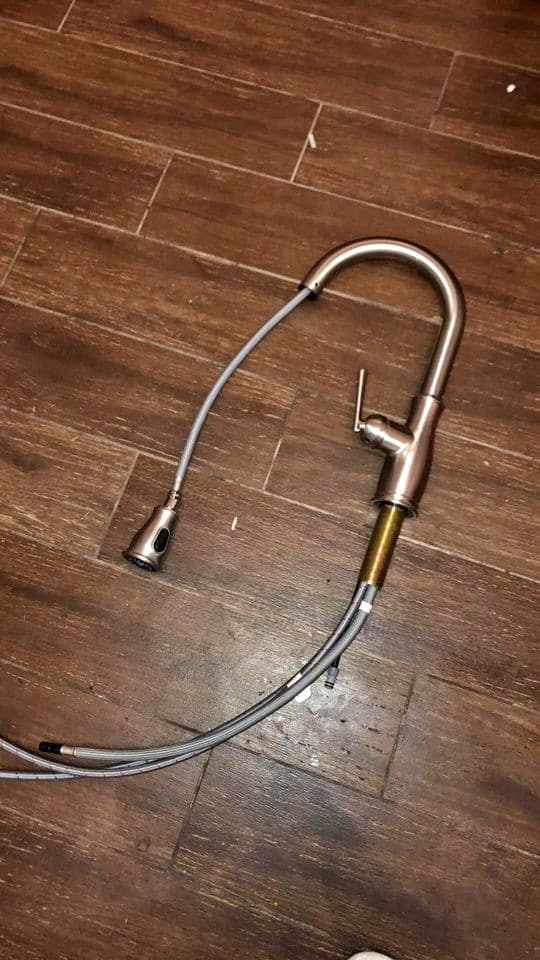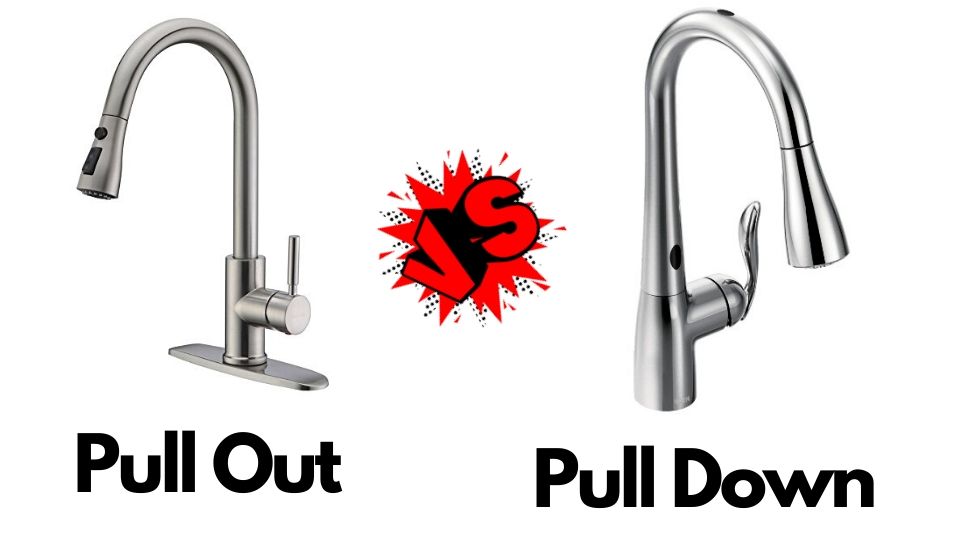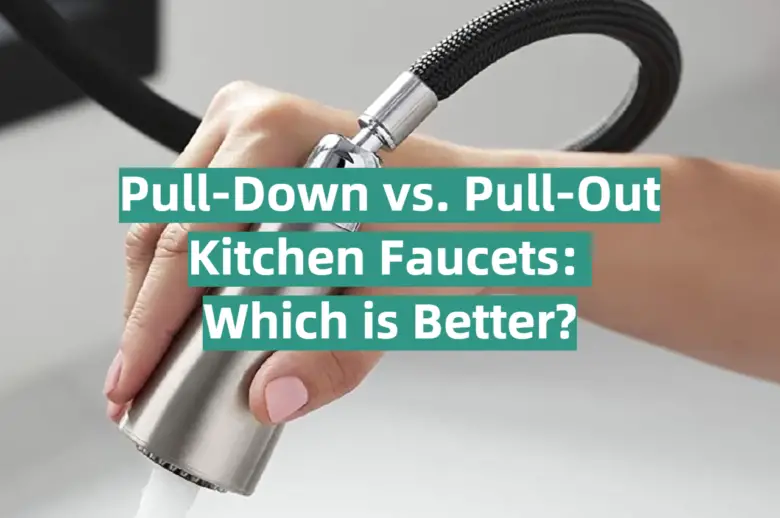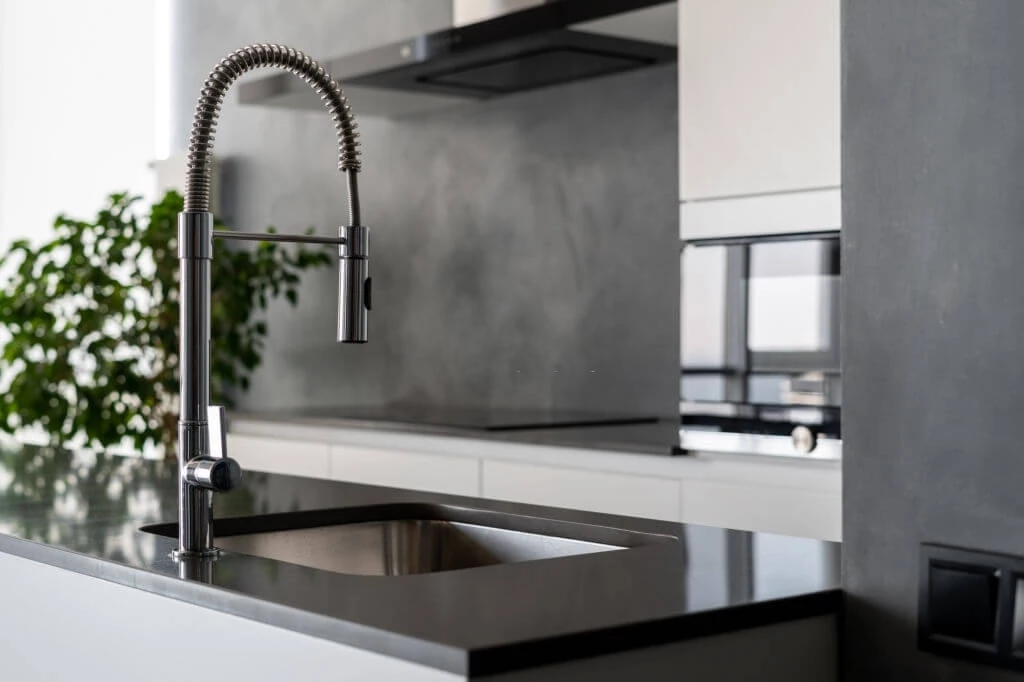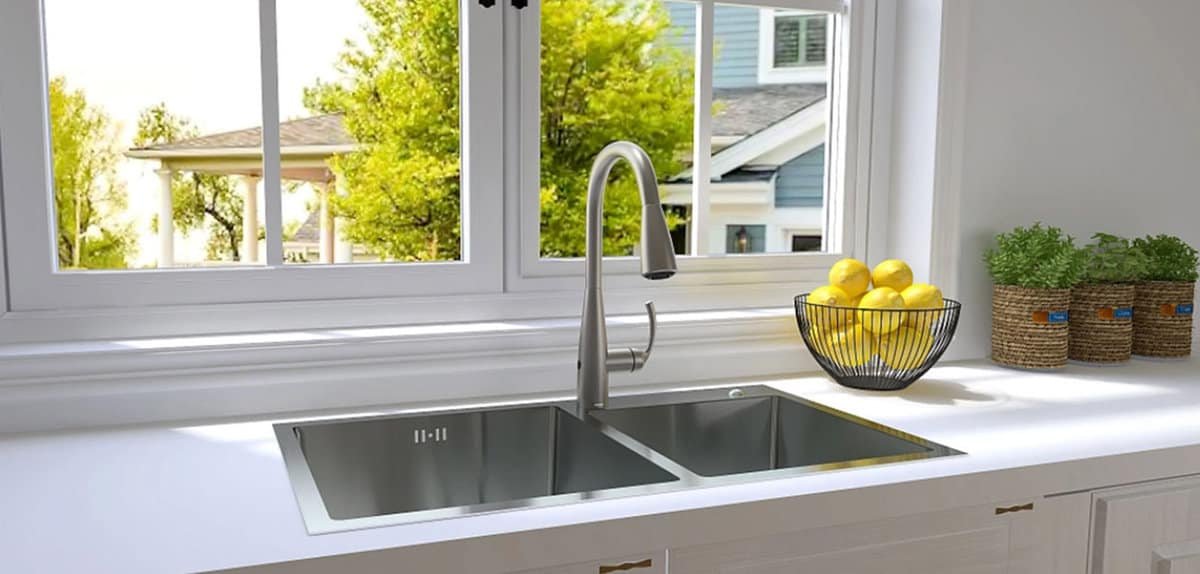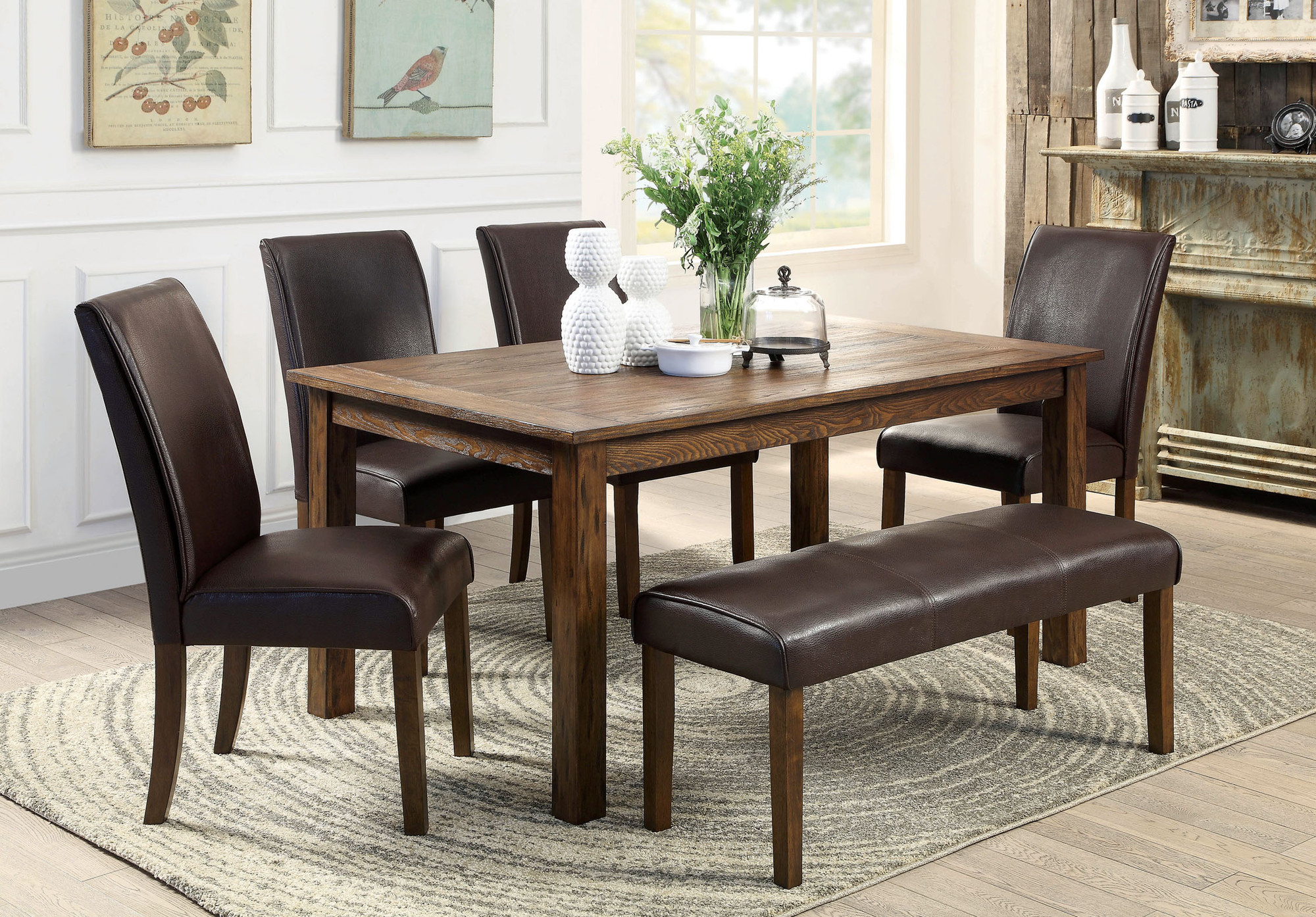1. Types of Kitchen Sink Faucets
When it comes to choosing a kitchen sink faucet, the first thing you need to consider is the type of faucet you want. There are several types of kitchen sink faucets to choose from, each with its own unique features and benefits.
One popular type is the pull-down faucet, which has a high arc and a spray wand that can be pulled down into the sink for easy cleaning and filling of large pots and pans.
Pull-out faucets are similar to pull-down faucets, but they have a shorter spout and a longer hose, making them more flexible for use in multiple sink areas.
Another option is the standard faucet, which has a single handle for both hot and cold water and a simple, streamlined design. This type of faucet is often more budget-friendly and works well in smaller kitchens.
Wall-mounted faucets are a great choice for those who want to save space on their counter or have a unique sink design. These faucets are mounted on the wall above the sink and come in a variety of styles and finishes.
Commercial-style faucets are becoming increasingly popular in home kitchens, with their professional look and functionality. These faucets have a high arc and a pull-down spray wand, making them perfect for heavy-duty use in the kitchen.
2. How to Choose the Right Kitchen Sink Faucet
With so many different types of kitchen sink faucets to choose from, it can be overwhelming to decide which one is right for you. Here are some key factors to consider when making your decision.
Style: The style of your faucet should complement the overall design of your kitchen. If you have a modern kitchen, a sleek and minimalist faucet may be the way to go. For a more traditional kitchen, a faucet with more ornate details may be a better fit.
Functionality: Think about how you use your sink and what features you need in a faucet. If you do a lot of cooking and cleaning, a pull-down or pull-out faucet with a spray wand may be the most practical choice. If you just need a basic faucet for everyday use, a standard faucet may suffice.
Budget: Kitchen sink faucets can range in price from under $100 to over $1000. Set a budget and stick to it, but also keep in mind that a higher price tag often means better quality and more features.
Finish: The finish of your faucet is not only an aesthetic choice, but it can also affect the durability and maintenance of the faucet. Popular finishes include stainless steel, chrome, brushed nickel, and oil-rubbed bronze.
3. Top Rated Kitchen Sink Faucets
If you're looking for the best of the best when it comes to kitchen sink faucets, here are some top-rated options to consider:
Moen Arbor Motionsense Touchless Kitchen Faucet: This commercial-style faucet has touchless technology, making it convenient and hygienic for the busy home cook.
Kohler Bellera Pull-Down Kitchen Faucet: With a sleek design and multiple spray options, this faucet is both stylish and functional.
Delta Trinsic Pro Pull-Down Kitchen Faucet: This faucet has a modern and industrial look, and its Touch20 technology allows for easy touch activation.
Kraus Bolden Commercial Kitchen Faucet: This heavy-duty faucet has a high arc and a pull-down spray wand, making it ideal for those who cook and clean a lot in their kitchen.
4. Best Kitchen Sink Faucet Brands
When it comes to kitchen sink faucets, there are several reliable and reputable brands to choose from. Some of the top brands include:
Moen, known for its innovative and durable faucets with features such as touchless technology and spot-resistant finishes.
Kohler, a brand with a wide range of faucet styles and finishes, including the popular Bellera and Simplice models.
Delta, known for its high-quality and stylish faucets with features like Touch20 technology and Diamond Seal technology for long-lasting use.
Kraus, a brand that offers both commercial and residential faucets with a focus on modern design and functionality.
5. Features to Consider When Choosing a Kitchen Sink Faucet
In addition to the style and type of faucet, there are several features to consider when choosing a kitchen sink faucet:
Number of handles: Faucets can have one or two handles, with one handle controlling both hot and cold water, or separate handles for each.
Spout height and reach: The height and reach of the spout can affect the functionality of the faucet, so consider your sink size and the tasks you typically do at the sink.
Spray options: Pull-down and pull-out faucets often have multiple spray options, such as a powerful stream or a gentle spray, for different cleaning needs.
Installation: Some faucets require a single or three-hole installation, while others may be wall-mounted. Make sure the faucet you choose is compatible with your sink and installation preferences.
6. How to Install a Kitchen Sink Faucet
If you're handy and have some basic plumbing knowledge, you may be able to install your new kitchen sink faucet yourself. Here are the general steps for installation:
Step 1: Turn off the water supply to the sink and open the faucet to release any remaining water pressure.
Step 2: Disconnect the old faucet and remove any mounting hardware.
Step 3: Install the new mounting hardware according to the manufacturer's instructions.
Step 4: Connect the new faucet to the water supply lines and secure it in place.
Step 5: Test the faucet to make sure it is functioning properly and make any necessary adjustments.
7. Choosing a Kitchen Sink Faucet for Your Style and Budget
With so many options available, you can find a kitchen sink faucet that fits both your style and budget. Keep in mind that a higher price tag may mean better quality and features, but there are also budget-friendly options that can still be stylish and functional.
Consider your kitchen's overall design and choose a faucet that complements it. For example, a sleek and modern faucet may not look right in a traditional kitchen, and vice versa.
Set a budget and stick to it, but also keep in mind the long-term cost of maintenance and potential repairs for cheaper faucets.
8. Maintenance Tips for Kitchen Sink Faucets
To keep your kitchen sink faucet in good working condition, it's important to perform regular maintenance. Here are some tips:
Clean regularly: Wiping down your faucet regularly can prevent the buildup of dirt and grime, and using a mild soap and water can help maintain the finish.
Check for leaks: Keep an eye out for any leaks or drips and address them promptly to avoid bigger issues down the road.
Remove mineral deposits: If you have hard water, you may notice mineral deposits building up on your faucet. To remove them, use a mixture of equal parts water and vinegar and a soft cloth.
Replace parts when needed: If you notice any parts of your faucet starting to wear or break, it's important to replace them to prevent further damage.
9. Comparing Pull-Down vs. Pull-Out Kitchen Sink Faucets
If you're torn between a pull-down or pull-out kitchen sink faucet, here are some points to consider:
Pull-down: These faucets have a taller spout and a spray wand that can be pulled down into the sink. They are great for filling large pots and pans and have a more modern and professional look.
Pull-out: These faucets have a shorter spout and a longer hose, making them more flexible for use in multiple sink areas. They are also better for smaller sinks and have a more traditional look.
Ultimately, the choice between pull-down and pull-out faucets comes down to personal preference and the specific needs of your kitchen.
10. How to Fix Common Problems with Kitchen Sink Faucets
Even with regular maintenance, you may encounter some common problems with your kitchen sink faucet. Here are some solutions to these issues:
Dripping or leaking: This could be caused by a worn or damaged O-ring, which can be easily replaced. If the problem persists, you may need to replace the entire cartridge.
Low water pressure: Mineral deposits can build up and clog the aerator, causing low water pressure. Remove the aerator and clean it with a mixture of equal parts water and vinegar.
Spray wand not working properly: If the spray wand is not switching between spray and stream modes, the diverter may be clogged. Remove the spray wand and clean or replace the diverter.
By understanding the different types of kitchen sink faucets, how to choose the right one, and how to maintain and troubleshoot common problems, you can make a confident decision when it comes to choosing the perfect faucet for your kitchen. With the right faucet, you can enhance the style, functionality, and overall experience in your kitchen for years to come.
Choosing the Right Kitchen Sink Faucet for Your Home
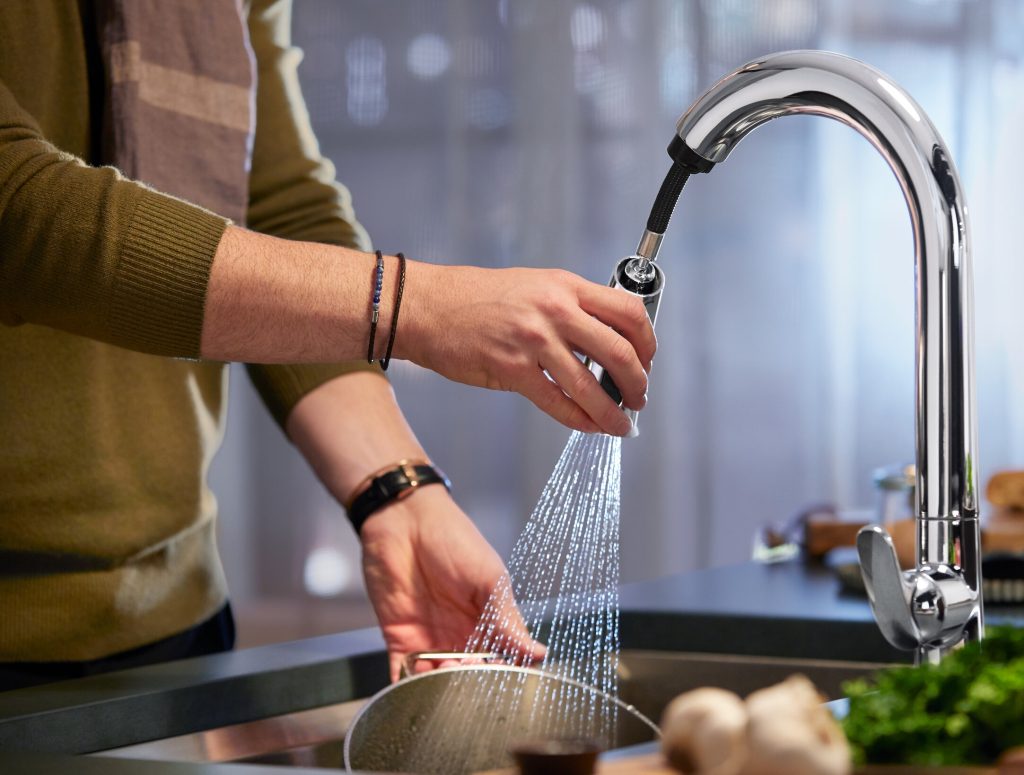
Consider Your Kitchen Style
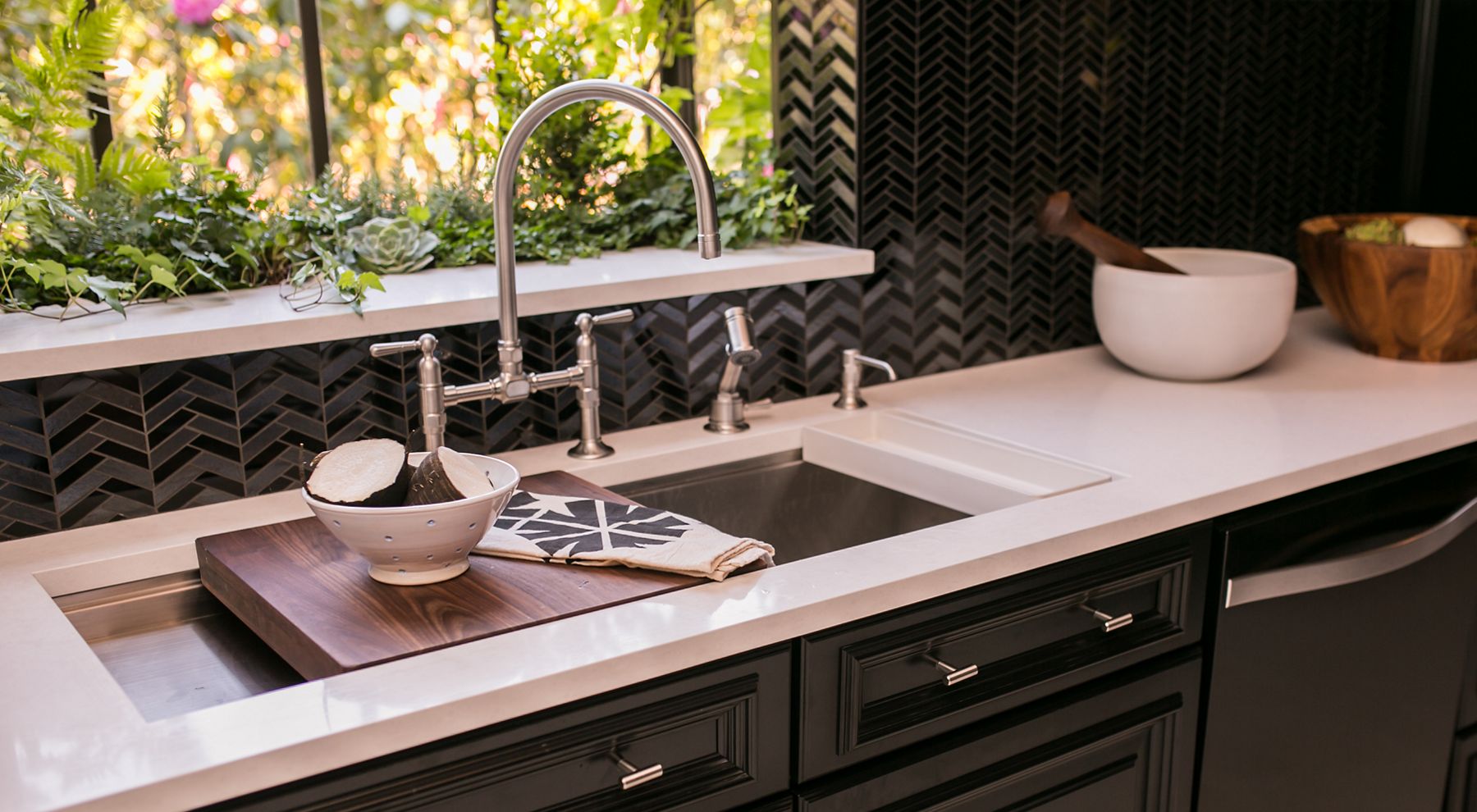 When it comes to choosing a kitchen sink faucet, it's important to keep your overall kitchen style in mind. The faucet should not only be functional, but it should also complement the design of your kitchen. If you have a traditional kitchen, a classic and elegant faucet with intricate details would be a great fit. For a modern kitchen, a sleek and streamlined faucet with clean lines would be more suitable. Be sure to also consider the finish of the faucet, as it should match the other hardware and fixtures in your kitchen.
When it comes to choosing a kitchen sink faucet, it's important to keep your overall kitchen style in mind. The faucet should not only be functional, but it should also complement the design of your kitchen. If you have a traditional kitchen, a classic and elegant faucet with intricate details would be a great fit. For a modern kitchen, a sleek and streamlined faucet with clean lines would be more suitable. Be sure to also consider the finish of the faucet, as it should match the other hardware and fixtures in your kitchen.
Think About Your Needs
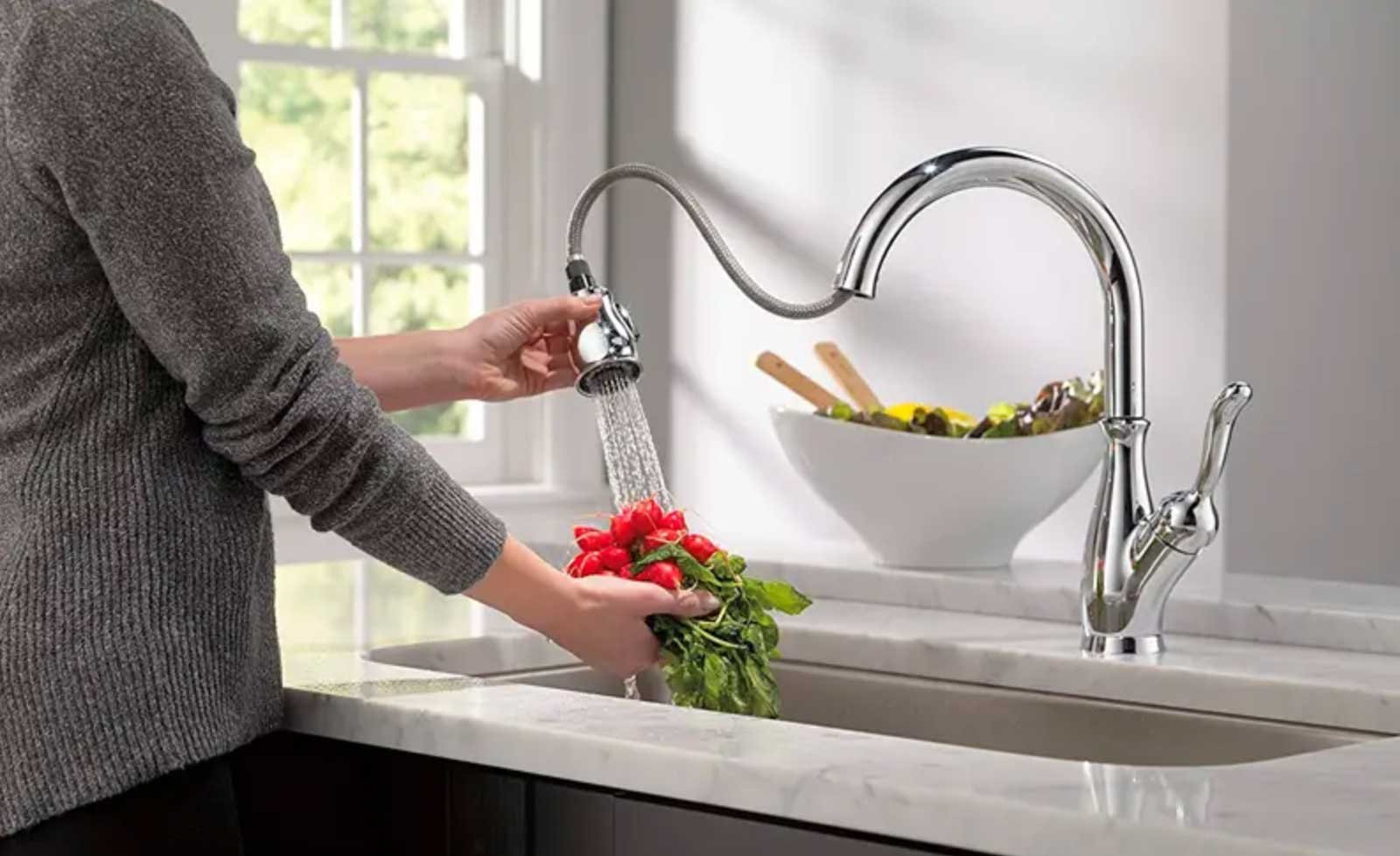 Before making a final decision, think about your specific needs when it comes to a kitchen sink faucet. Do you do a lot of cooking and need a faucet with a high arc for easy filling of large pots? Or do you have a small kitchen and need a space-saving faucet? Do you prefer a single handle or a double handle faucet? These are all important factors to consider when choosing the right faucet for your kitchen.
Before making a final decision, think about your specific needs when it comes to a kitchen sink faucet. Do you do a lot of cooking and need a faucet with a high arc for easy filling of large pots? Or do you have a small kitchen and need a space-saving faucet? Do you prefer a single handle or a double handle faucet? These are all important factors to consider when choosing the right faucet for your kitchen.
Quality and Durability
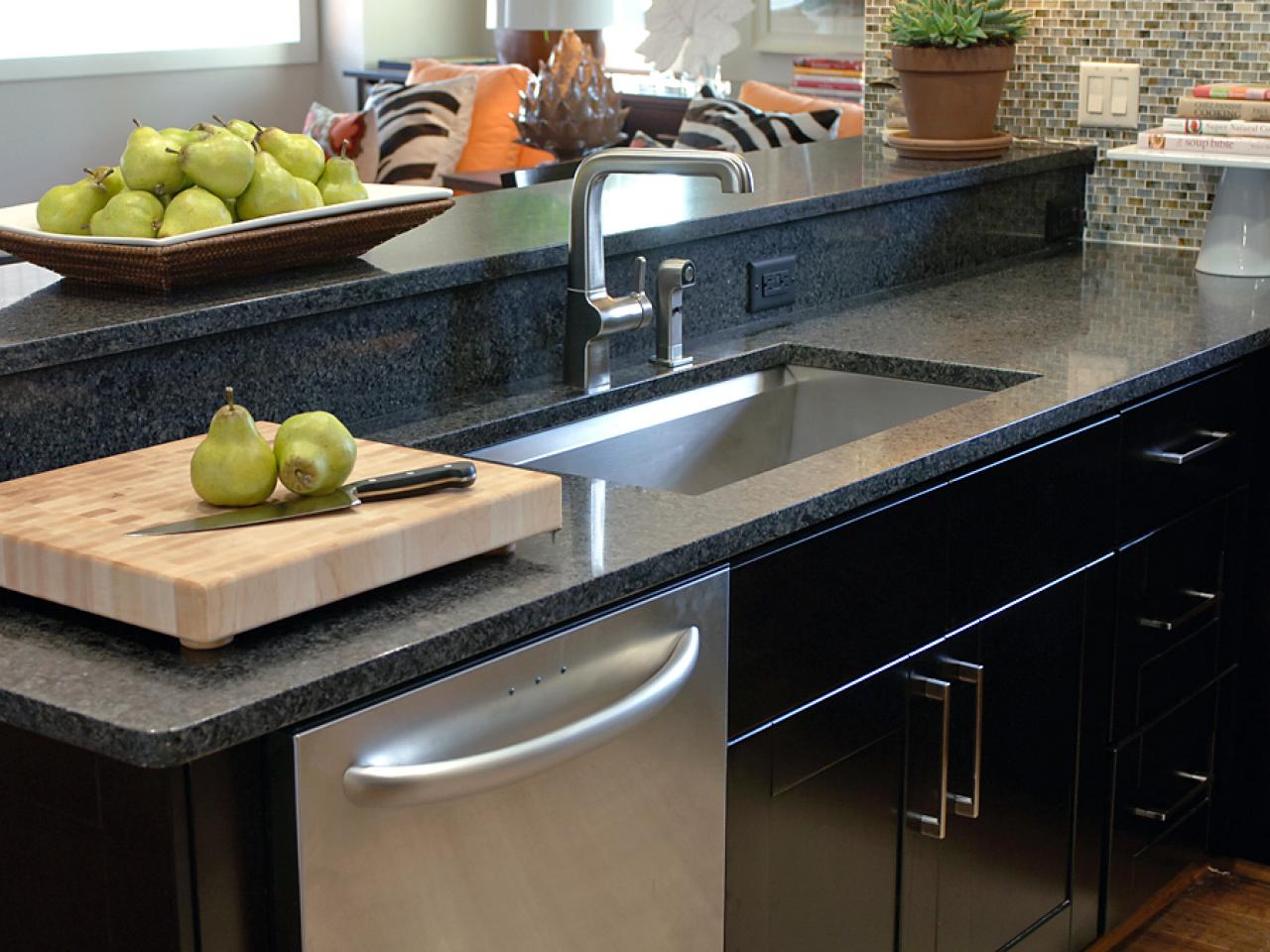 A kitchen sink faucet is used multiple times a day, so it's important to invest in a high-quality and durable one. Look for faucets made from solid brass or stainless steel, as these materials are known for their longevity and resistance to rust and corrosion. It's also a good idea to choose a faucet with a ceramic disc valve, as it ensures smooth and drip-free operation for years to come.
A kitchen sink faucet is used multiple times a day, so it's important to invest in a high-quality and durable one. Look for faucets made from solid brass or stainless steel, as these materials are known for their longevity and resistance to rust and corrosion. It's also a good idea to choose a faucet with a ceramic disc valve, as it ensures smooth and drip-free operation for years to come.
Budget
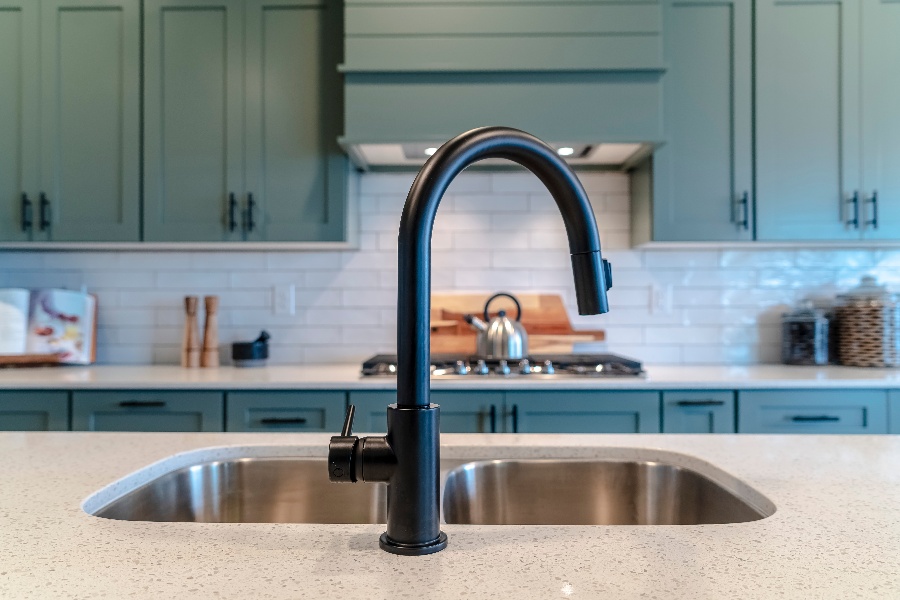 While it's important to invest in a quality faucet, it's also important to consider your budget. Luckily, there are many options available at different price points. Keep in mind that a higher price doesn't always guarantee a better product, so do your research and read reviews before making a decision.
In conclusion
, choosing the right kitchen sink faucet requires careful consideration of your kitchen style, specific needs, quality and durability, and budget. By keeping these factors in mind and doing some research, you can find a faucet that not only looks great but also functions well for your daily needs. Don't be afraid to take your time and shop around to find the perfect faucet for your home.
While it's important to invest in a quality faucet, it's also important to consider your budget. Luckily, there are many options available at different price points. Keep in mind that a higher price doesn't always guarantee a better product, so do your research and read reviews before making a decision.
In conclusion
, choosing the right kitchen sink faucet requires careful consideration of your kitchen style, specific needs, quality and durability, and budget. By keeping these factors in mind and doing some research, you can find a faucet that not only looks great but also functions well for your daily needs. Don't be afraid to take your time and shop around to find the perfect faucet for your home.


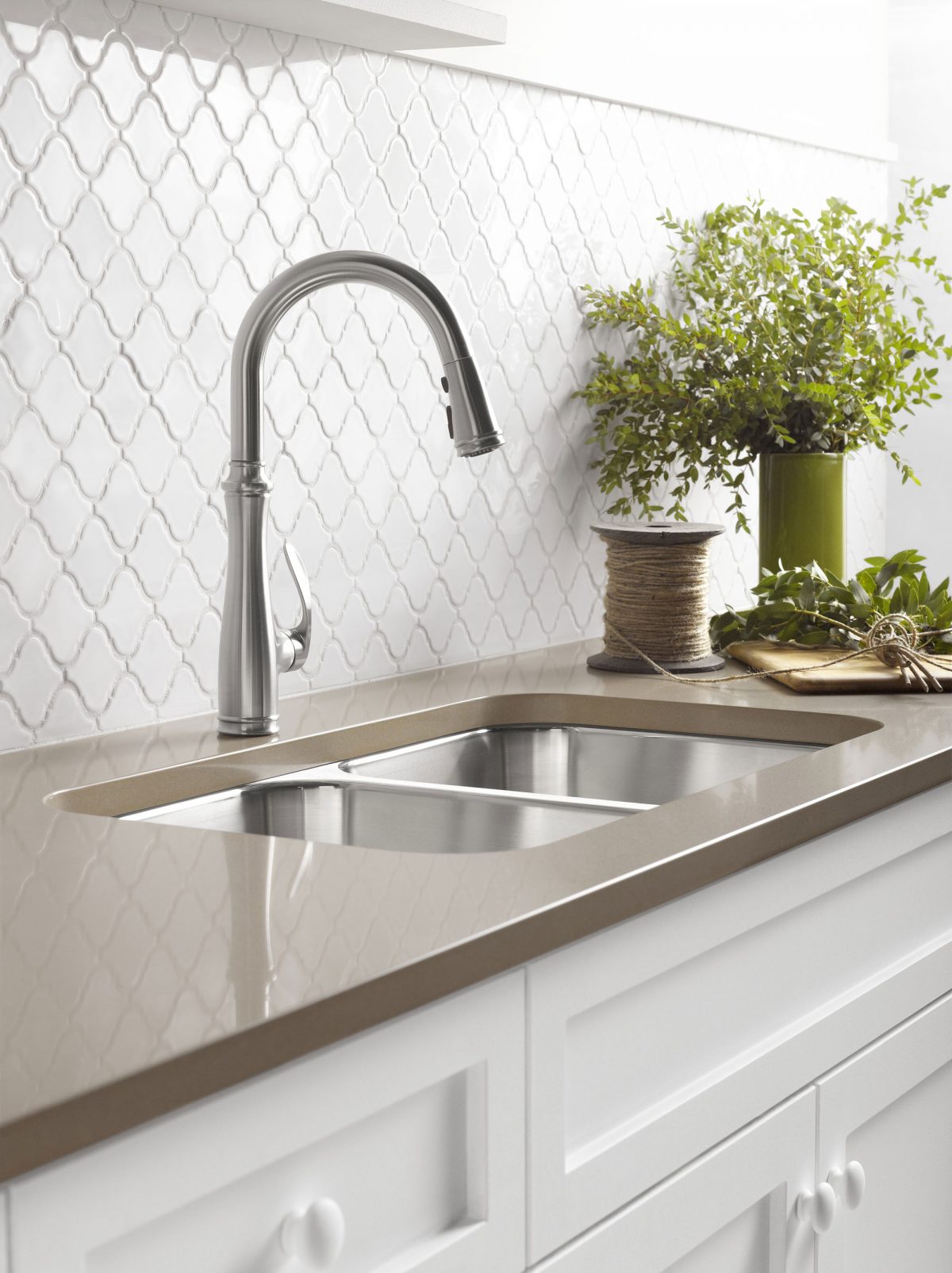

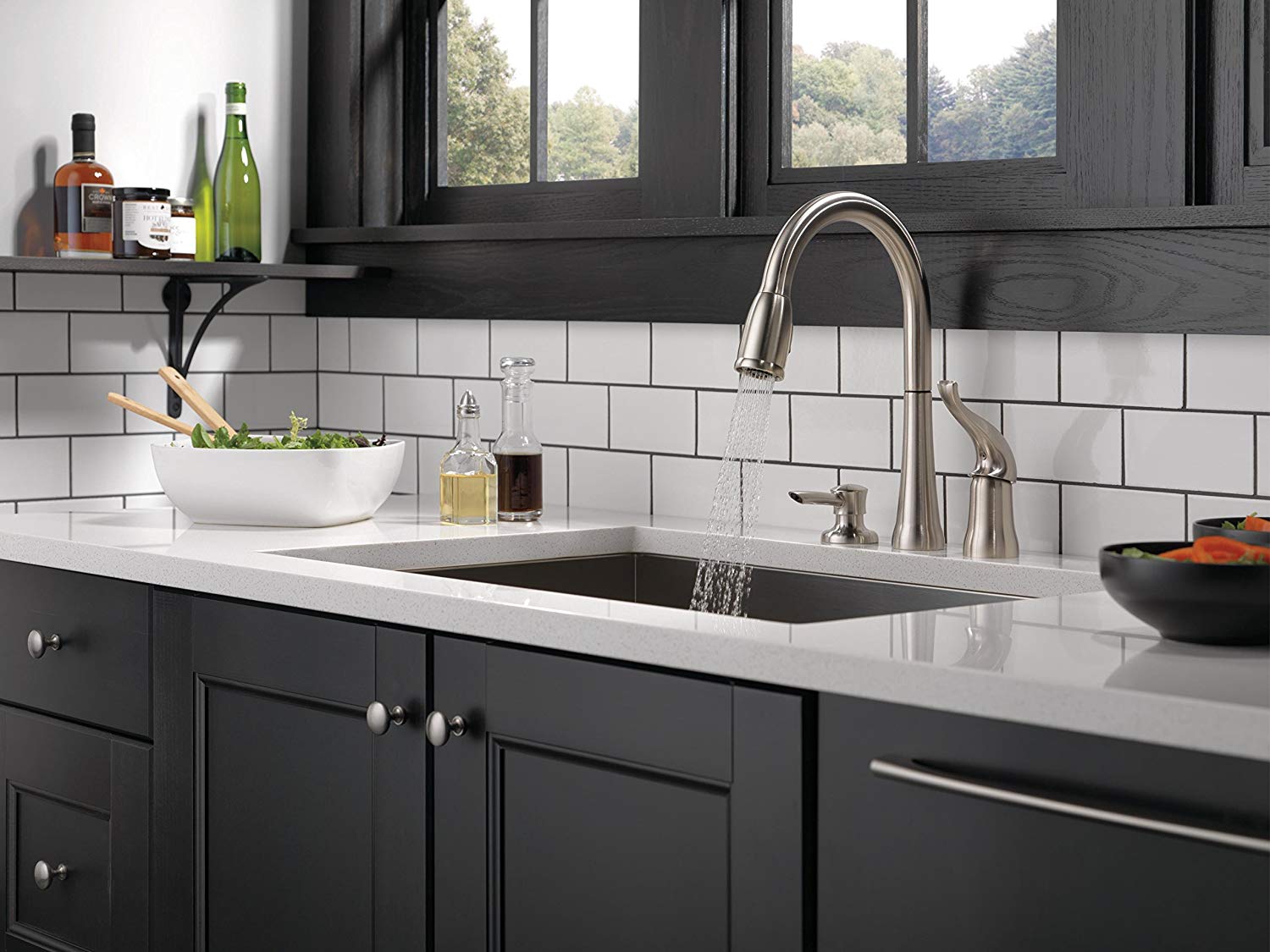





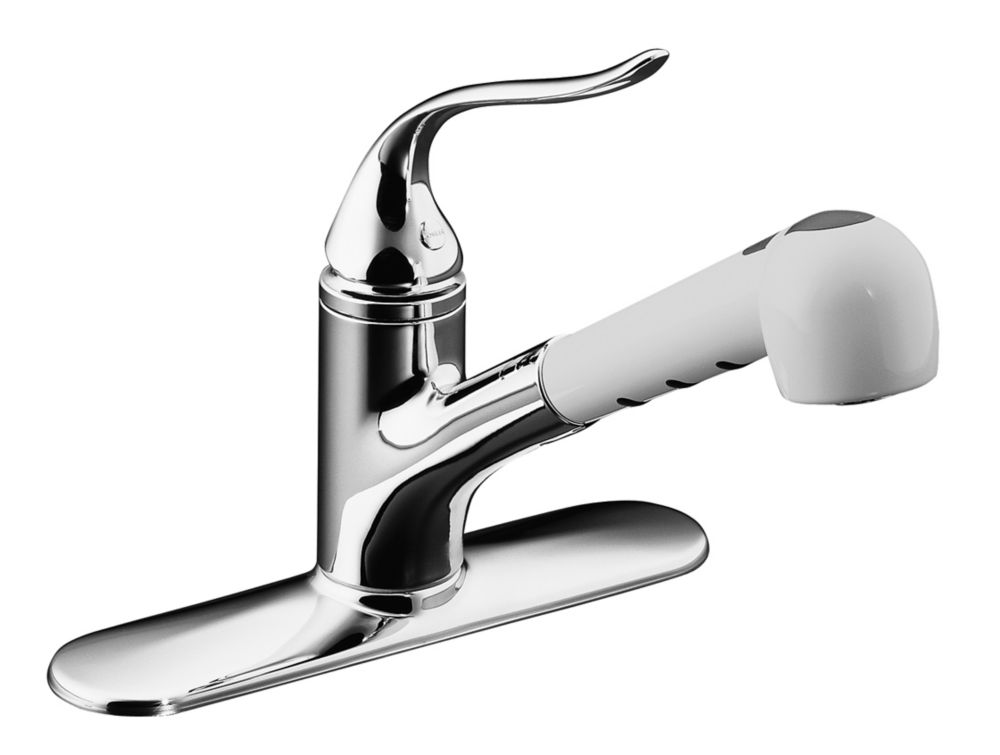

/header-16x19-image-640w-853h.jpg)


